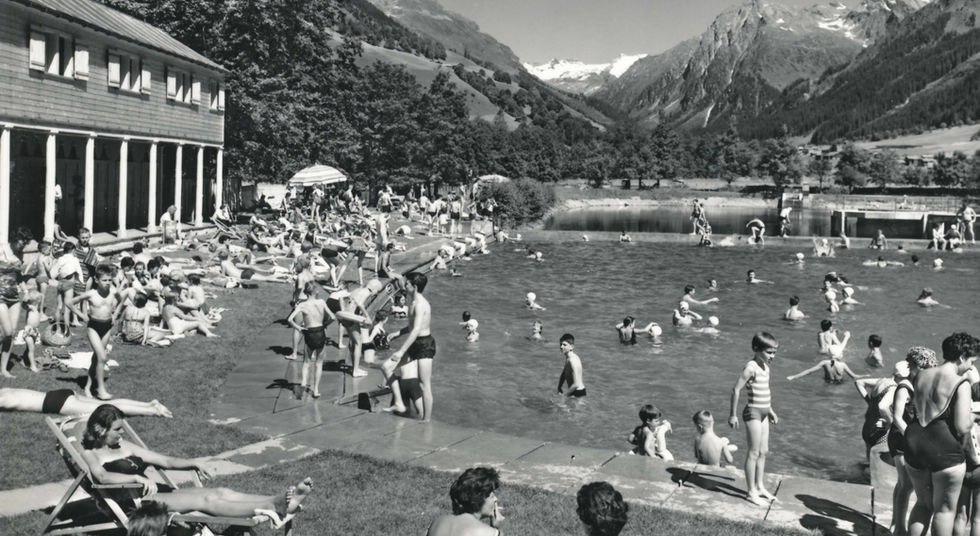HISTORY - WALSERSTOLZ
In 1222 the "ecclesiam sancti Iacobi" (church of St. Jacob) is mentioned for the first time in a document that the monastery of Churwalden had issued to itself by the Pope to confirm its rights and possessions. This first documentary mention is regarded as the founding date of the village of Klosters or, as Florian Hew put it in the Klosters Heimatbuch (1965), "the history of our homeland begins with this".
Die Publikation "Klosters, 800 Jahre Geschichte 1222-2022" zeigt die gesamte Geschichte von Klosters im Stil eines modernen Heimatbuches, aufbereitet von Dr. Florian Hitz

© Archiv Verein Klosters Tourismus
At the time around 1200, the back end of the Prättigau, similar to large areas of Churrätien, was heavily forested, hardly economically developed and sparsely populated. The settlement of a monastery was intended to urbanize the area and bring it into agricultural use. For this purpose, men from the industrious, tightly organized and equally reformist and hermit-like order of the Praemonstratensians were brought in and they were known as specialists in land cultivation. They found their way from Prémontré in northern France, via the Bavarian-Swabian Roggenburg, to Chur for the expansion of the old church of St. Luzi into a monastery (1140) and they founded the Churwalden monastery twenty years later.
Between 1208 and 1222, the first Praemonstratensians probably came from the monastery of Churwalden to the back end of the Prättigau, where they possibly first built a simple church and only later expanded it in cleared land to a monastery. The local land development was pushed forward by the bishop in Chur together with the high noble family of the barons of Vaz. In 1289, the Vazers enfeoffed a Walser settlement cooperative with their Davos property. A short time later, Walser settlers also appeared in the area of the monastery of St. Jakob "and began to shape the area with their way of settling and their entire economic-cultural habitus" (Florian Hitz, Die Kirche St. Jakob, 1993, p. 13).

© Archiv Verein Klosters Tourismus
HISTORY - WORLD STORIES
Klosters is a picture-book alpine resort: a chic chalet-style village with authentic traditions and an international feel due to many cosmopolitan Habitués. Probably for this reason, even royal guests feel at home here.
Klosters became known as a winter and summer resort more than 100 years ago. A decisive impulse for its development into a stylish vacation classic for connoisseurs occurred in the 50s of the last century. At that time many famous names from the mainly American and British film, music and theatre scene discovered the ski resort, which earned it the nickname "Hollywood on the Rocks". Paul Newman, Gregory Peck, Yul Brynner, Lauren Bacall, Gene Kelly or Greta Garbo are just some of the names that graced Klosters. In the wake of these times, Klosters attracted many British and American guests who found their second home here. They shaped the style and atmosphere of the resort for decades, and their children still do today.
Klosters has been in the news worldwide in recent decades thanks to its illustrious guests from the British royal family. Nevertheless, the elegant village, which has preserved its original character and chalet style, has never taken off. On the contrary: discreet luxury with understatement has become the formula for success in the upper Prättigau. Thus, even today many famous guests spend their holidays here to relax in the peace and quiet.
Die Publikation «Klosters» von Fabrizio d’Aloisio macht erstmals den viel zitierten Mikrokosmos der 1950er Jahre sicht- und fassbar.























